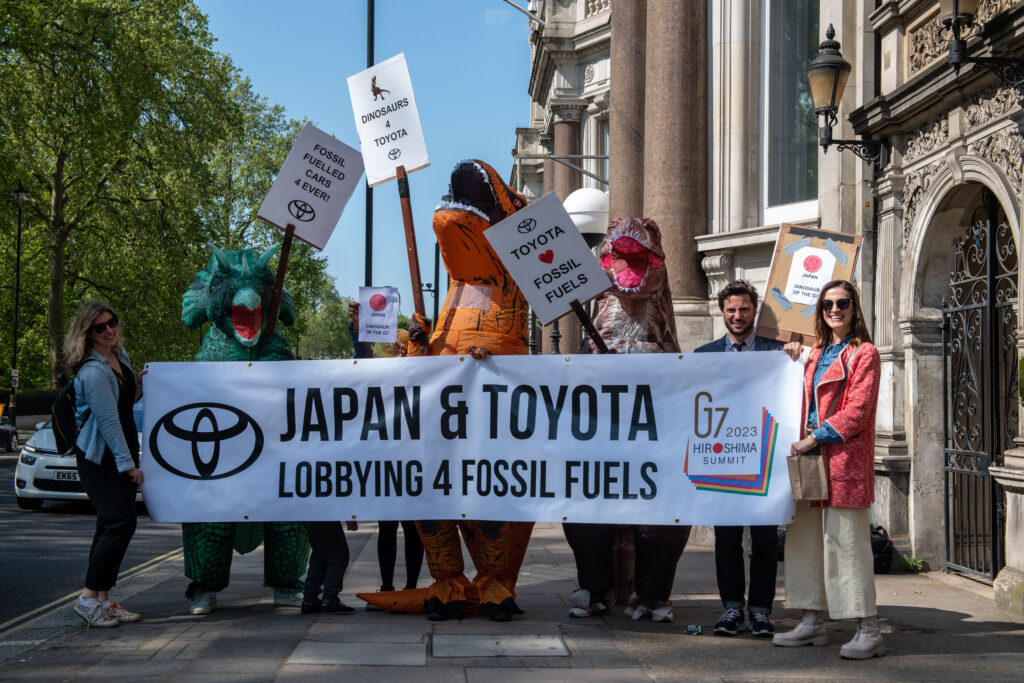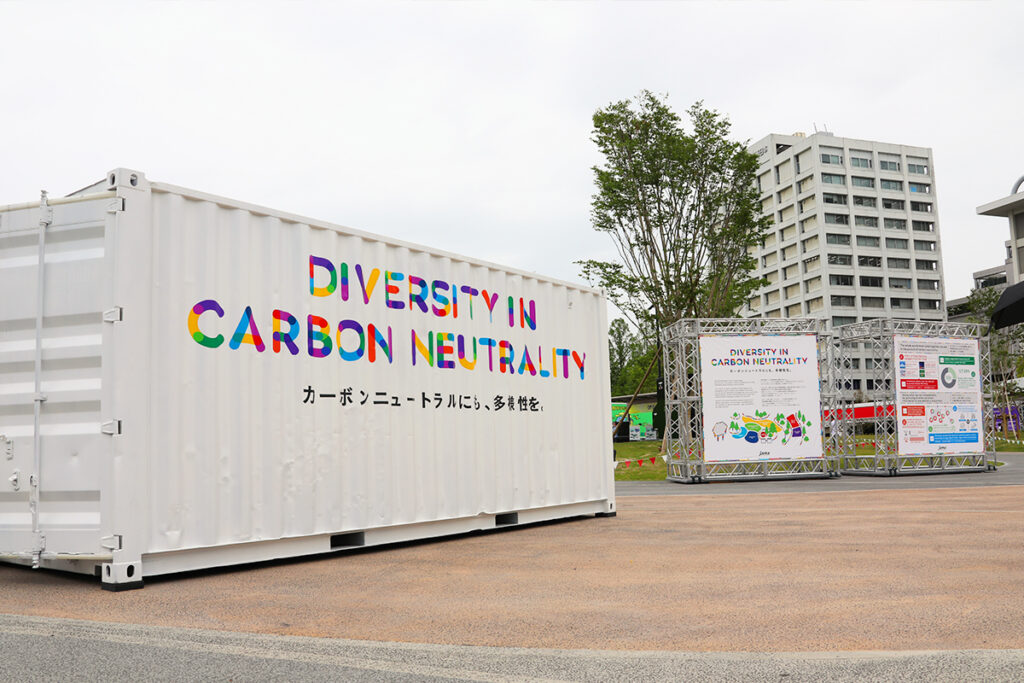G7 summit in Japan – how did Toyota respond?

Toyota proved once more that it prioritizes greenwashing PR over real climate action
At the G7 summit in June last year (2022), Japan watered down the climate ambition of the agreement by removing a key zero-emission vehicle target from the text.
According to Reuters reporting, this came after direct lobbying from Toyota boss and chairman of the Japan Automobile Manufacturers Association (JAMA), Mr Akio Toyoda, to stick to vague language designed to include fossil-fuel burning “hybrid” cars (which entirely by chance of course, would help prolong Toyota’s overwhelmingly combustion-engine business model)
So Japan hosting the G7 summit this year, May 19-21 in Hiroshima was a huge opportunity – both to strengthen climate action, and a chance for Toyota to show it had changed course under its new CEO, Koji Sato.
Ahead of the summit, the We Mean Business Coalition urged all G7 governments to commit to 100% zero emission vehicle sales by 2035. On the streets, activists from Public Citizen, Ecohustler, and Polluta (yours truly) staged protests outside Japanese embassies to demand a change of course.
So how did the G7 summit go? In terms of tackling road transport emissions, more of the same. Instead of a firm commitment by all its members to phasing out combustion engine cars, the final communique just “highlighted various actions countries are taking, including policies for achieving 100% or the overwhelming penetration of sales for zero-emission vehicles… by 2035 and beyond”.
The document politely failed to mention that Japan is the only G7 country not taking this action. (see US proposal, Canada, Germany, Italy, France within the EU plan, and UK plan).
We don’t have evidence of Toyota’s direct lobbying so far this year, but the outcome reflects Toyota’s stance, and contains several of its corporate talking points. For example, “Electrified” vehicles (caution: a positive-sounding term mostly used to refer to hybrid cars running on 100% fossil fuel as a power source) and “sustainable carbon-neutral fuels” (a magical, almost non-existent technology mainly used by the car and oil industries to wedge open a loophole for continued oil use in the car sector, which if it ever were scaled up, would still be a huge waste of energy, with just as much toxic NOx emissions as gasoline/petrol.)
But we do know Toyota attended and attempted to influence the outcome of the G7 summit, from two main public events.
First intervention: Toyota organised a media briefing in Hiroshima the day before the summit started, at which Akio Toyoda and Toyota’s “chief scientist” Gill Pratt repeated already-debunked talking points – claiming the world does not have enough minerals to transition to EVs (false) that we have to wait for more renewables infrastructure to be built before switching to EVs reduces emissions (false), and that “hybrid” fossil-fuel burning cars reduce emissions more than EVs (false).
(Editors note: we know Gill Pratt is not actually a “scientist” because a) he works for a car company, not an independent academic institution), and b) he endorses Toyota’s claim that it can achieve “carbon neutrality” with a mix of combustion engine and hybrid-combustion engine vehicles that emit CO2. There is no clear sense in which this claim *could* be scientifically true, and the company refuses to clarify it)
Second intervention: Even after he stepped down as CEO of Toyota, Akio Toyoda remains the President of Japan’s auto industry lobby group JAMA. At the G7 JAMA organised a wonderfully ironic photoshoot of six elderly male CEOs standing in front of a colourful sign saying “Diversity in Carbon Neutrality”.

(image source: Getty Images)
This is very similar to Big Oil’s PR strategy – portray yourself as an authority on climate by talking about ‘a diverse energy mix” and diverse “low-carbon solutions” while lobbying to prolong and expand your main incumbent fossil-fuelled business model that makes climate change worse.
In reality, Toyota is not seriously pursuing a diverse range of clean technologies. 99.6% of the vehicles it sold last year had an exhaust pipe and burn oil products that drive climate change.
Toyota is not really, as it claims, moving towards “carbon neutrality”, but in the opposite direction – ramping up its combustion engine car sales to a new record high this financial year, meaning rising annual CO2 emissions, with no end in sight.
But while at this year’s G7 the Toyota may have got its way and stalled climate action, the next big test will be its upcoming shareholders meeting in mid-June.
Three of Toyota’s own shareholders have submitted a resolution asking the company to review its anti-climate lobbying activities, on the basis that this could damage the company’s brand value.
Let’s see how many shareholders vote in favour of reappointing Akio Toyoda as chairman of the board, after his repeated, tired old misleading statements at the G7.


